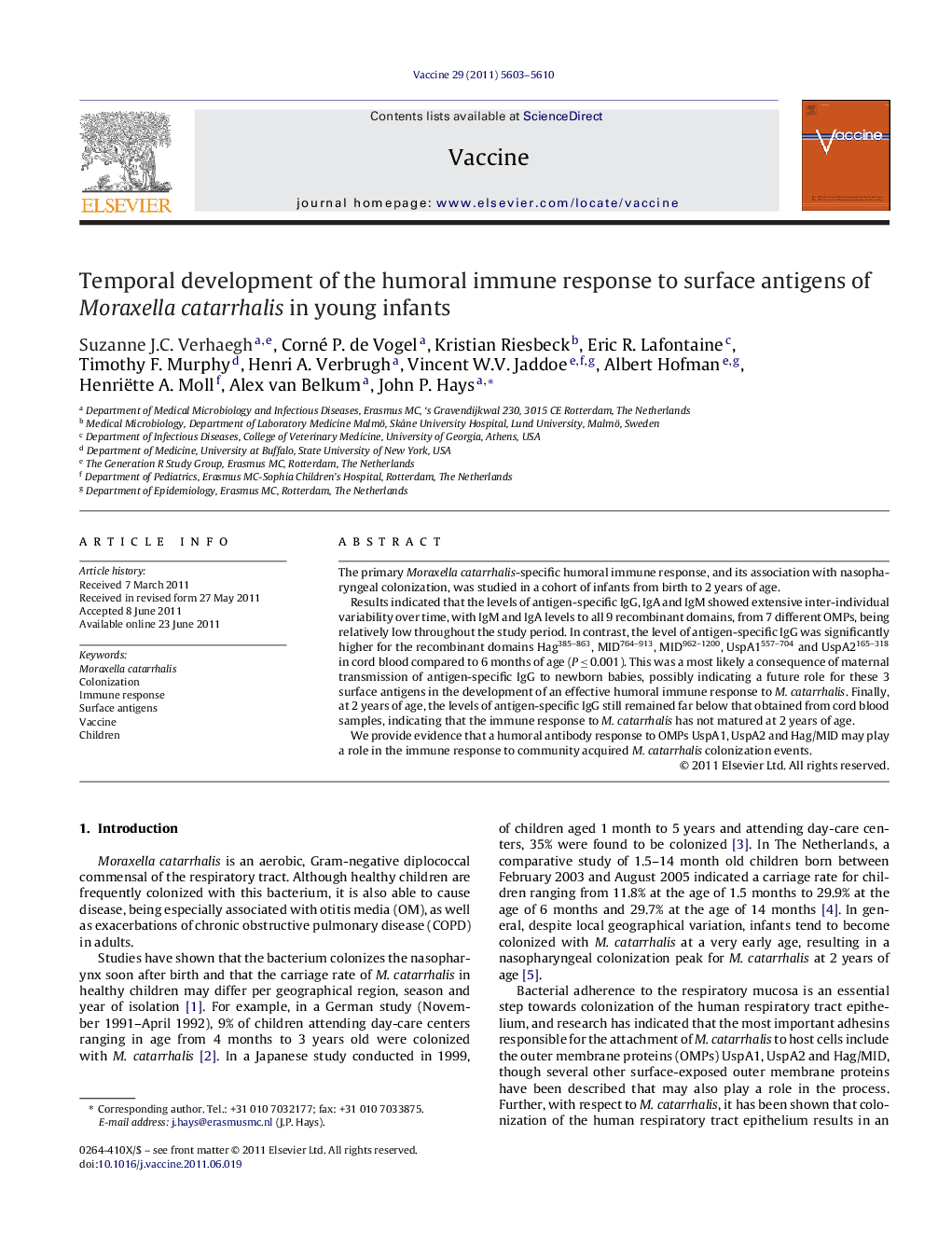| کد مقاله | کد نشریه | سال انتشار | مقاله انگلیسی | نسخه تمام متن |
|---|---|---|---|---|
| 2403253 | 1102891 | 2011 | 8 صفحه PDF | دانلود رایگان |

The primary Moraxella catarrhalis-specific humoral immune response, and its association with nasopharyngeal colonization, was studied in a cohort of infants from birth to 2 years of age.Results indicated that the levels of antigen-specific IgG, IgA and IgM showed extensive inter-individual variability over time, with IgM and IgA levels to all 9 recombinant domains, from 7 different OMPs, being relatively low throughout the study period. In contrast, the level of antigen-specific IgG was significantly higher for the recombinant domains Hag385–863, MID764–913, MID962–1200, UspA1557–704 and UspA2165–318 in cord blood compared to 6 months of age (P ≤ 0.001). This was a most likely a consequence of maternal transmission of antigen-specific IgG to newborn babies, possibly indicating a future role for these 3 surface antigens in the development of an effective humoral immune response to M. catarrhalis. Finally, at 2 years of age, the levels of antigen-specific IgG still remained far below that obtained from cord blood samples, indicating that the immune response to M. catarrhalis has not matured at 2 years of age.We provide evidence that a humoral antibody response to OMPs UspA1, UspA2 and Hag/MID may play a role in the immune response to community acquired M. catarrhalis colonization events.
Journal: Vaccine - Volume 29, Issue 34, 5 August 2011, Pages 5603–5610